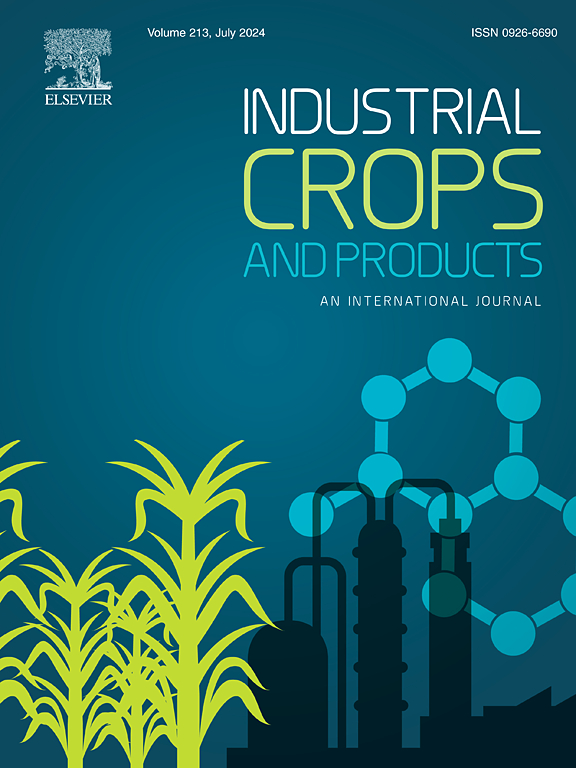Enhancement of corrosion resistance of structural timber by injecting boron preservatives labeled with fluorescent carbon dots into living trees
IF 5.6
1区 农林科学
Q1 AGRICULTURAL ENGINEERING
引用次数: 0
Abstract
The preservation of wood from industrial crops is critical for enhancing its durability and extending its utility in structural applications. Wood preservation treatment in standing trees, also known as injection treatment of living trees, involves injecting a wood preservation solution directly into the tree. This method offers advantages of easy operation and deep penetration. To improve the treatment efficiency of injecting wood preservative solution into trees, it is important to monitor the flow of the preservative solution during the treatment process. This allows for real-time adjustments and ensures optimal distribution of the preservative throughout the wood. The use of the fluorescence effect of carbon dots to investigate the rise of wood preservative solutions during the wood preservation treatment in standing trees has not been previously reported. Therefore, yellow, fluorescent carbon dots labeled boron wood preservatives (BX/YCDs/SiO2) were prepared to study the rising patterns of wood preservative solutions. After injection treatment, fluorescent BX/YCDs/SiO2 could be found from the injection port to the treetops under a fluorescence microscope, showing different fluorescence colors. Compared to traditional wood preservative treatments, injecting BX/YCDs/SiO2 into living trees significantly improved the decay resistance of the treated timber and reduced preservative leaching rate. Additionally, the mechanical properties of standing trees injected BX/YCDs//SiO2 increased significantly compared to standing trees treated with boron preservatives by immersion. These findings provide an effective solution for wood preservation, aligning with the need for resource-efficient treatment methods for industrial forestry products. This work demonstrate the potential of BX/YCDs/SiO2-treated standing trees to improve the performance of structural timber, offering a sustainable and efficient approach for wood preservation in industrial applications.
求助全文
约1分钟内获得全文
求助全文
来源期刊

Industrial Crops and Products
农林科学-农业工程
CiteScore
9.50
自引率
8.50%
发文量
1518
审稿时长
43 days
期刊介绍:
Industrial Crops and Products is an International Journal publishing academic and industrial research on industrial (defined as non-food/non-feed) crops and products. Papers concern both crop-oriented and bio-based materials from crops-oriented research, and should be of interest to an international audience, hypothesis driven, and where comparisons are made statistics performed.
 求助内容:
求助内容: 应助结果提醒方式:
应助结果提醒方式:


